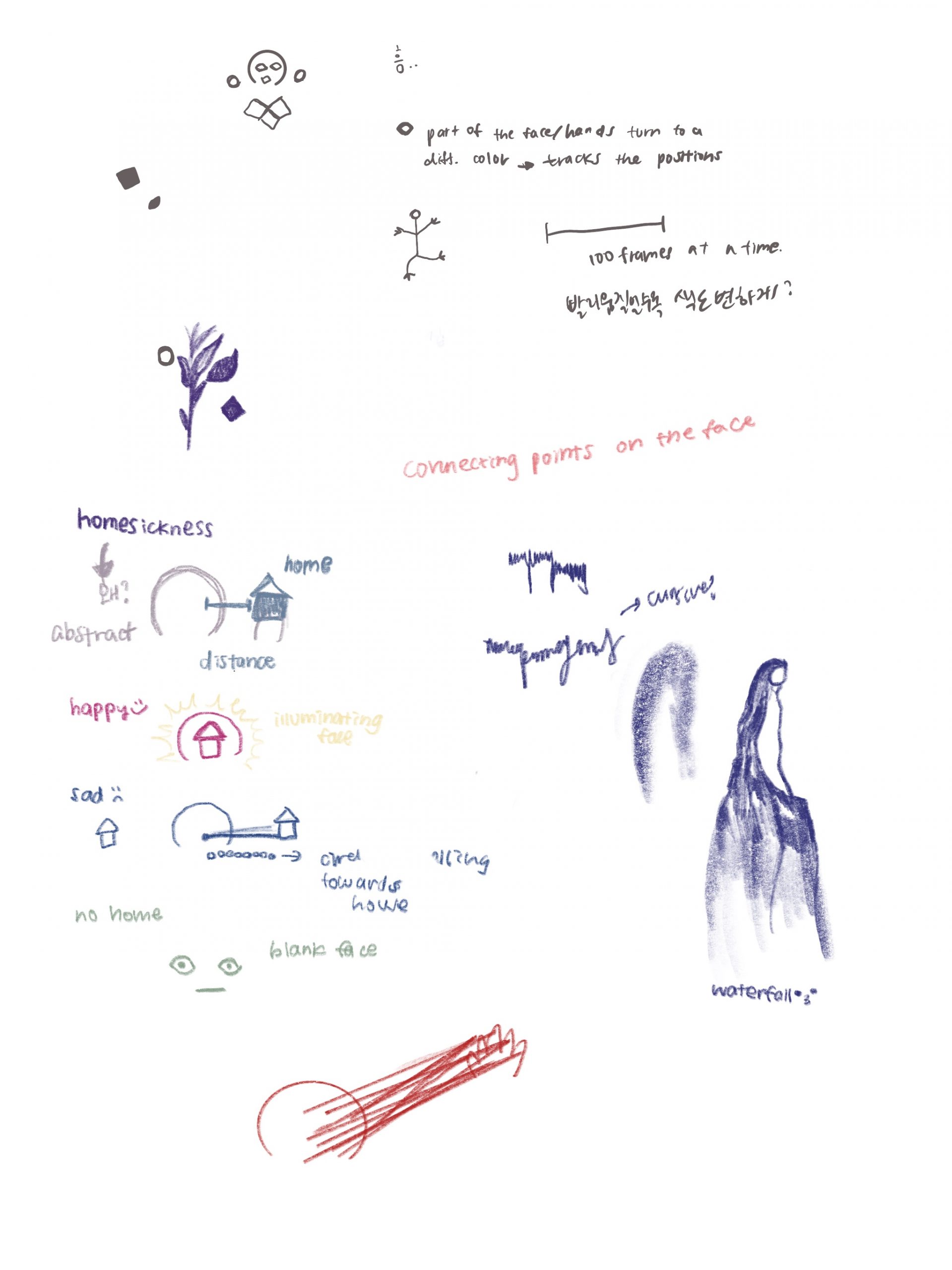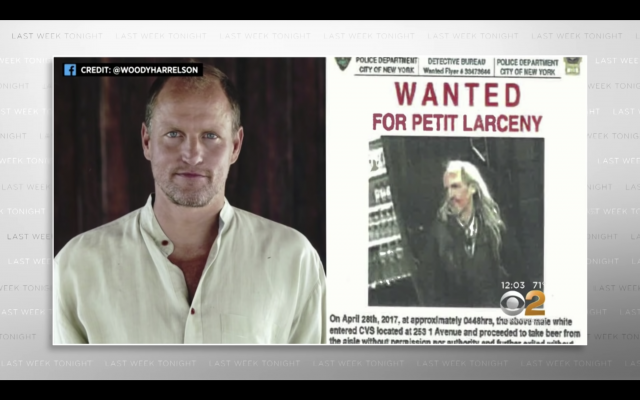The project that I selected is “That Time I sold My Dreads Online” by E. Jane. This piece is a simple image of a small plastic bag containing several pieces of dread labeled to be “Locks From E. Jane’s Head” on ebay. I found it interesting because I think it is a very blunt, no-frills conversation about the dilemma that many artists face. Artists can choose to make art that they truly believe in but will often have trouble supporting themselves or they can create art that they may actively dislike making or find disgusting simply to be able to afford living.
Student Area
kong-AugmentedBody
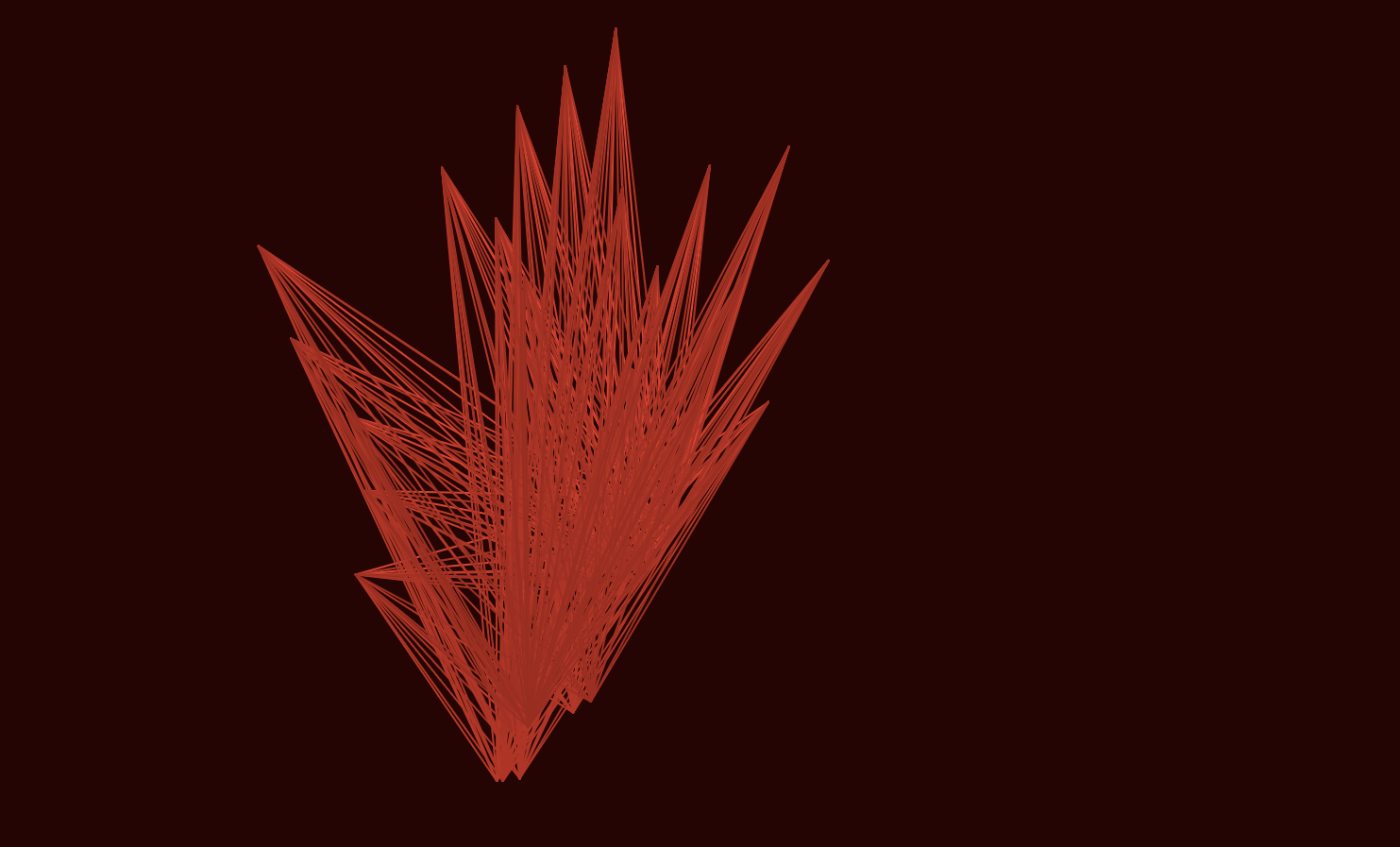

My initial idea was to represent the homesickness I was feeling by utilizing the distance between one’s face and hand: the face would represent self and the hand would represent home. I wanted to play with the distance between the face and the hand to foster different interactions.
While playing around with the connections, I came across the idea of recreating the period cramps I feel as I am currently on my period. Based’s on one’s face and hand movement, various lines stretch, shrink, and strangle with one another. When another hand enters, the lines switch over to the other side, representing the sudden pains that occur.
As this was a quick project, I believe that there is a myriad of ways to extend this project. For instance, I could also bring in points from the body to not only create more interactions but also present more diverse forms. Further, instead of utilizing lines, I could incorporate shapes such as triangles and make use of gradients to build a 3d object.
duq-AugmentedBody
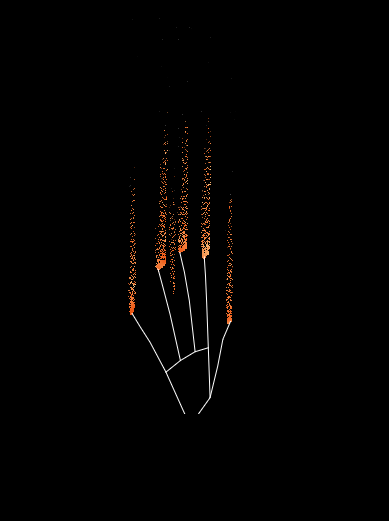
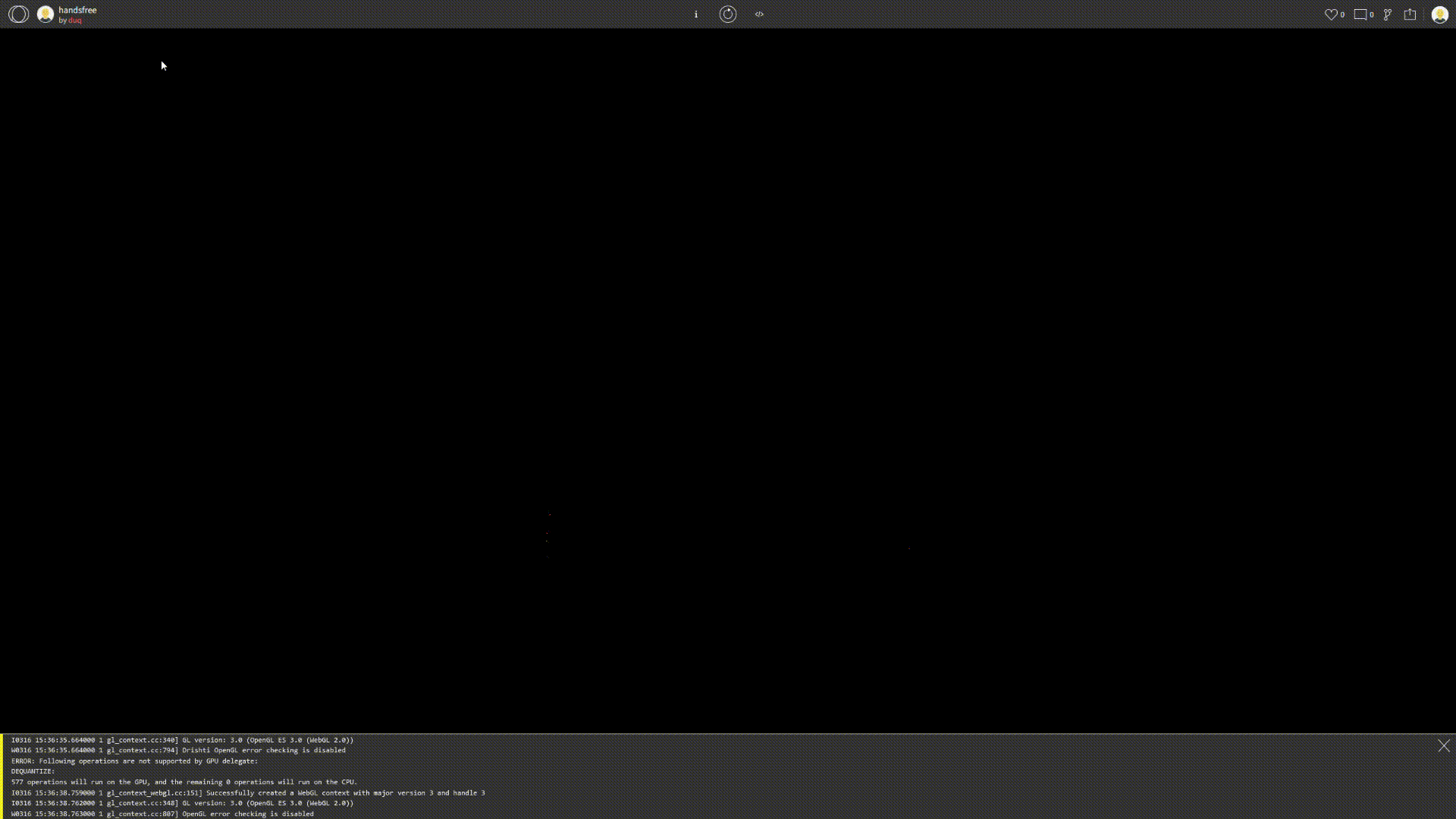
In this project I tried to make a program that would track the positions of your hands (using the code given to us) and track generative fire onto your fingertips on the screen. I used several different factors to try to generate realistic fire that determined how rapidly it would ascend, how spread out the fire would get and how much smoke it produced. Overall, I am happy with how I was able to convert the idea behind my project into a reality, but the program does run very slowly, making the fire move upwards far more slowly than real fire would. I tried to fix this issue by using pixels instead of circles, but it did continue to run slowly. Something that I wish I could have added was the option to only have fire coming out of your index finger if you close your other fingers as this would allow you to draw with the fire, but I really did not know how to begin to implement this.
Sneeze-AugmentedBody

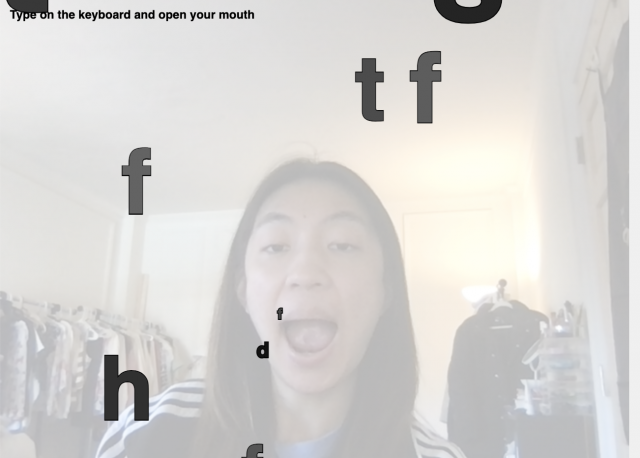
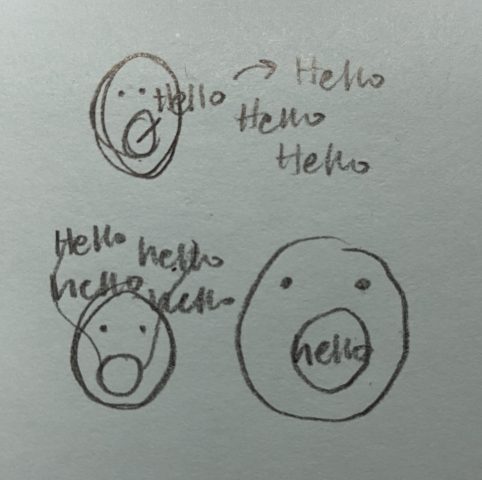
My concept for the Augmented body project was to have an altered way of speaking. I wanted for people to type in their words and have the words come out of their mouth without them having to actually voice themselves. I wanted to make this because sometimes writing or typing out words is easier than saying them. When you open your mouth and press a letter on the keyboard, multiple of that letter will float out of your mouth.
I wanted to have the things floating out of your mouth be words, but I ended up doing single letters instead. As I started coding for words, I ran into lots of problems (that probably could be fixed if I had more time). I was not able to get full words as input since I had a difficult time figuring out input text boxes combined with the web screen display (every time I had the input text box on screen, it would cover the webcam and vise versa). I settled for detecting single letters pressed and outputting that instead of full words. Now if the user wants to type a word, they must view the word by reading the floating letters from farthest from the mouth to closest (so disjoint letters).
spingbing-FaceReadings
The reading Against Black Inclusion in Facial Recognition was very interesting to me because it is the first time I have encountered an opinion which is against the inclusion of nonwhite faces in facial recognition software. After reading, it only makes sense to have this opinion – if the tool is made by and for the oppressor, then it makes sense to not want to be included in the software’s scope. This stuck out to me because it is easy to get caught up in the hype of modern technology and to want to have a part in it, but this reading has brought up the very important point which is to be aware of the possibility that the effects of this modern technology can be very harmful.
spingbing-AugmentedBody
My artwork is a piece of software which gradually covers the face in jittery dots which are meant to act as a method to blur the face into obstruction. I used HandsFree.js to achieve this code.
Unfortunately, I did not have the time or means to do my performance. I am planning on borrowing lights from the 3rd floor lending office and using an empty room to record this piece. My plan is for the video to start at complete darkness and slowly increase the light on my face at an angle at the same rate in which my face is obstructed, creating a sort of dynamic contrast between the “uncovering” of my face with the light vs the anonymization of the filter. The video would be less than 30 seconds long.
When finished, I think this piece will be fairly strong due to its conceptual implications. My interpretation is that it has to due with performative activism or representation done by the broader media.
Koke_Cacao-AugmentedBody
Play it here: https://kokecacao.me/page/Course/S22/60-212/code/p5/dino/index.html

(Note: No sketches were created in the process of making this project)
Solar-AugmentedBody

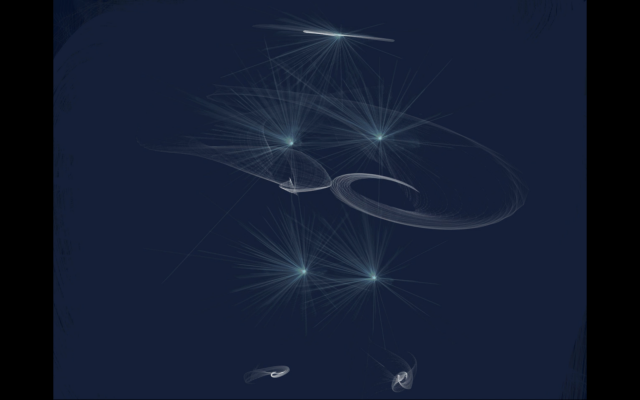
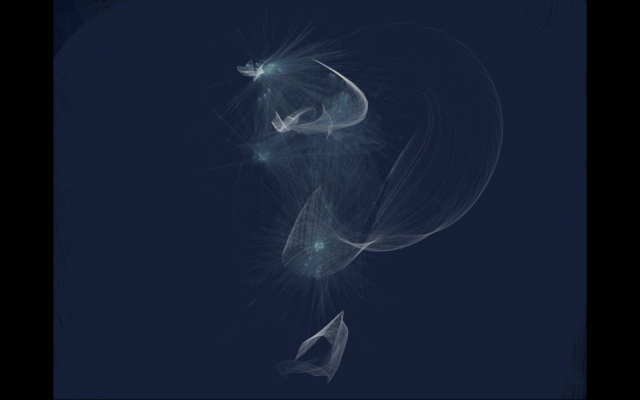
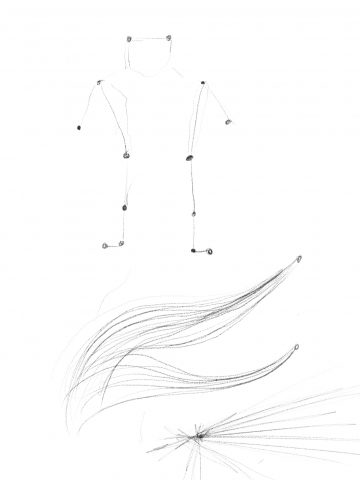
I wanted to play with weightless, fluid visuals that respond to one’s movement, something that can enhance the lightness of a dancer’s movement. Hence, I played with visualizing particles that follow specific points of the body: hands, feet, knees, elbows, and the head. I am happy with the vague silhouette that is visible when one walks around and also the abstract fluid forms that result from the swinging of an arm or kick of a leg.
kong-facereadings
In Last Week Tonight’s Face Recognition video, it mentioned how facial recognition no longer applies only to humans. As an example, it demonstrates how sensors can scan fish and apply image processing to identify the fish as well as any relevant symptoms. This struck me as I wasn’t aware or ever thought about this idea. I believe that this opens a myriad of opportunities not only for creative practices but also for real-life problem solving, such as protecting endangered animals. Personally, as a pet owner, it would be helpful to have a pet recognition technology: it would detect and share the pet’s location with the pet owner to minimize pet loss.
The idea of algorithm bias itself was very striking to me as I’ve haven’t deeply thought about the negative sides of face technology before. More specifically, in Against Black Inclusion in Facial Recognition by Nabil Hassein, it mentioned facial recognition’s racial bias and law enforcement use. Though it can be used for good, it raised a point that it could strengthen police control and thereby deepen on-going racial bias. This made me wonder if facial recognition technology is “really” good and if there are ways to ensure that it is solely used for its benefits.
CrispySalmon-FaceReadings
I thought this one is hilarious. People are intentionally using the flaws of the algorithm to their advantage.
2. The privacy concern of using facial recognition is always a heated debate. Last summer, I was flying from Beijing and there was this new kiosk at the airport where you can simply scan your face and it tells you your flight information right away. At first I was amazed at its convenience because I don’t need to pull out my boarding passes. But then it struck me that I never scanned my face when I was checking in nor when I was purchasing the ticket online. I’m not exactly sure when did the system logged my face in and I started to be more concerned about facial recognition and where it’s harvesting the data from.

